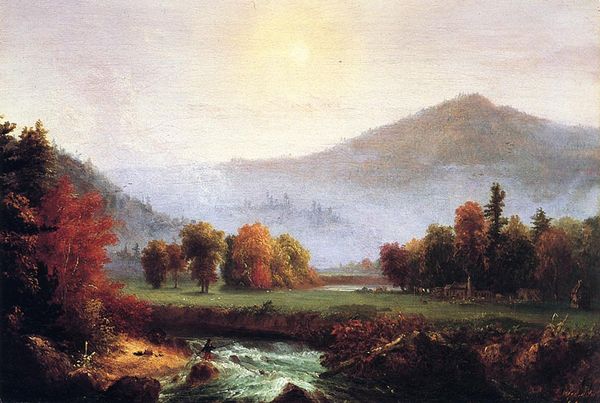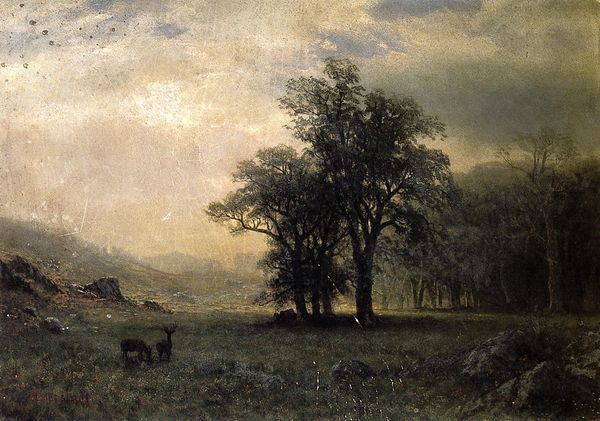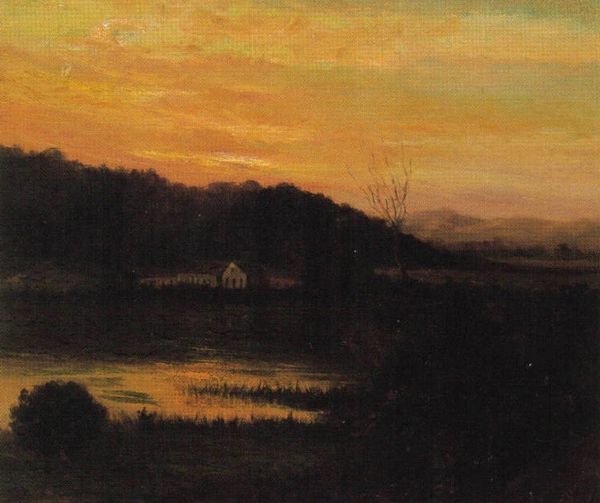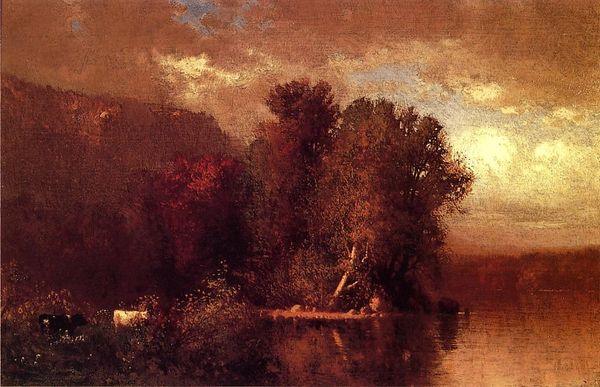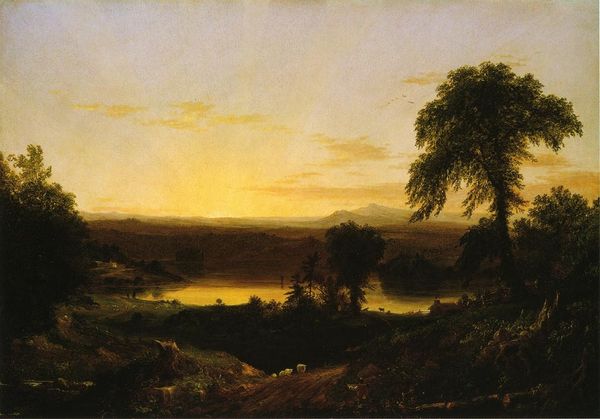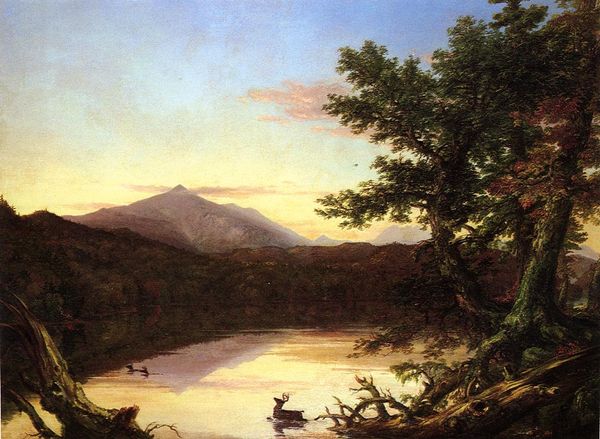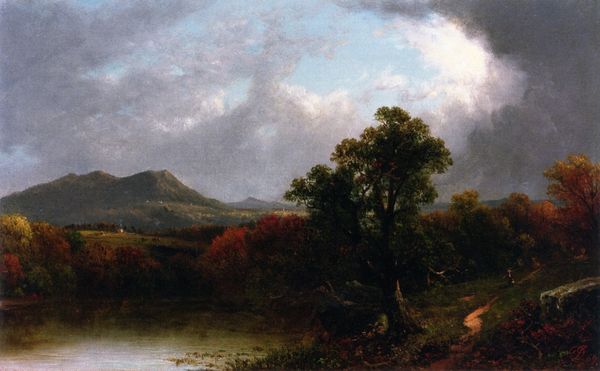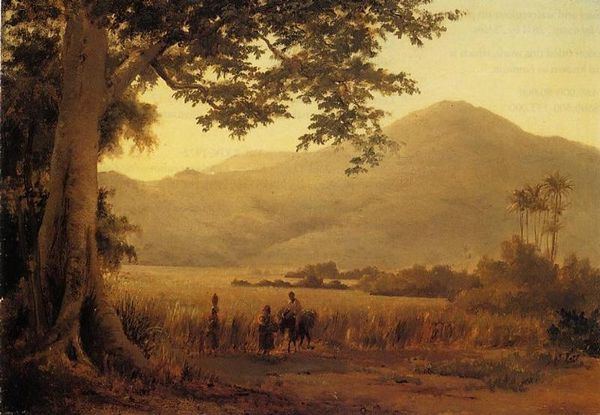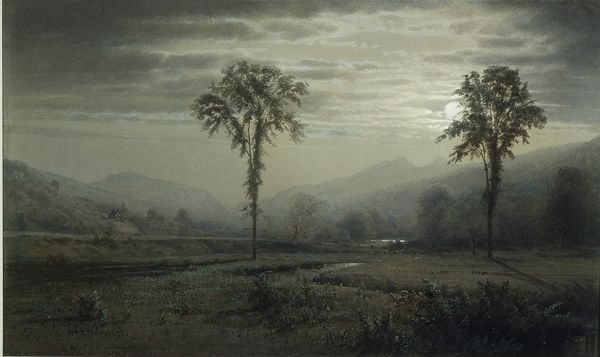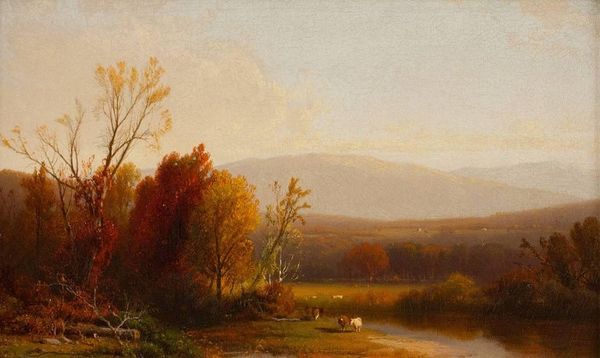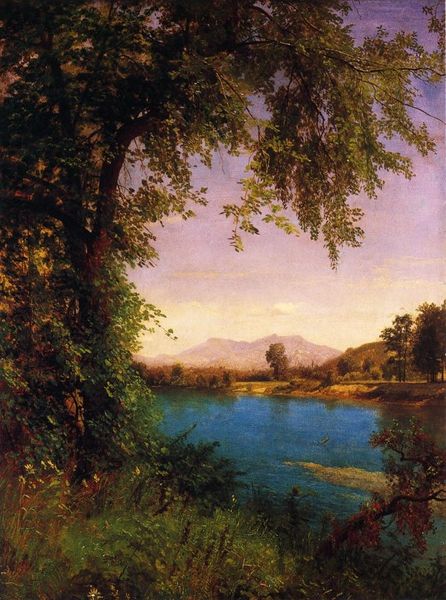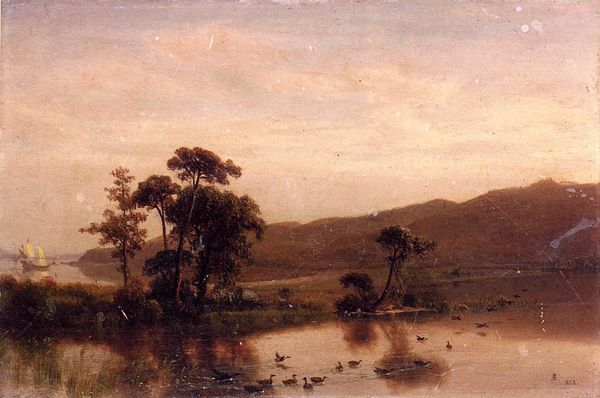
painting, plein-air, oil-paint
#
tree
#
sky
#
animal
#
painting
#
plein-air
#
oil-paint
#
landscape
#
river
#
figuration
#
forest
#
mountain
#
natural-landscape
#
hudson-river-school
#
fog
#
water
#
naturalism
#
realism
#
mist
Copyright: Public domain
Curator: Let’s turn our attention to Albert Bierstadt’s "Landscape with Cattle," an oil on canvas from 1859. It resides in a private collection, offering us a glimpse into the 19th-century American pastoral scene. Editor: My first impression is one of subdued tranquility. There’s a definite calmness in the arrangement of light and shadow; the painting employs a rather narrow range of tonality to evoke, not exactly nostalgia, but perhaps an idealized past. Curator: Bierstadt, associated with the Hudson River School, often used landscape painting to explore the ideological construction of the American West, tapping into ideas of Manifest Destiny and agrarianism. This work, though seemingly simple, is not divorced from these concerns. Editor: Structurally, there's a definite separation of zones—the detailed foreground versus the soft focus background—creating depth and drawing the eye into the painting. Note how the dark mass of trees in the left provides an anchor and balance for the cattle at the water's edge. Curator: Those cattle, rendered small against the vast landscape, speaks to the then-burgeoning agricultural economy but also hints at a human presence taming the wilderness, a powerful ideological narrative at the time that often disregarded Indigenous people. Editor: Speaking of the animals, there is an understated touch in the reflected light that captures their silhouettes. Look, also, at that unusual celestial object near the top; it pierces through the orange haze of the sky—it brings visual tension, nearly disrupting the serenity you talked about! Curator: Precisely! I’m glad you noticed that unusual streak. It could suggest a falling star. And maybe even an indication of divine approval or a celestial mandate of westward expansion! Considering Bierstadt's patronage, it's hard to ignore these undercurrents. Editor: What ultimately holds my attention, though, is the treatment of light itself. The scene bathes in golden, diffused sunlight. Despite its socio-historical implications, the harmony achieved between tones creates its enduring visual appeal, for me. Curator: Absolutely. Bierstadt's skill lies in blending the idyllic and the ideological. Appreciating it allows us to reflect on how even landscapes are never neutral territory, and it becomes about analyzing representation within a certain cultural and political lens. Editor: A productive and somewhat revealing look; now, regarding this “divine mandate," I think more visual study is still needed, especially in understanding what role is played in that moment.
Comments
No comments
Be the first to comment and join the conversation on the ultimate creative platform.
